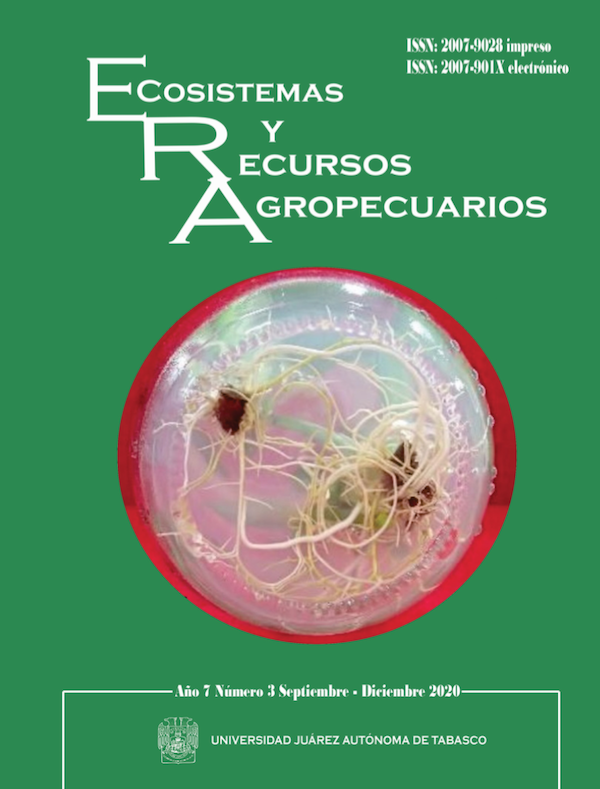Carbon storage in aboveground biomass of tropical agrosystems in Tabasco, Mexico
DOI:
https://doi.org/10.19136/era.a7n3.2532Abstract
Carbon sequestration in aboveground biomass from agrosys- tems is an alternative for Global Climate Change mitigation and climate regulation. There are 102 000 ha of oil palm (Elaeis guineensis Jacq.) established in the Mexican southeast, these palms have potential for carbon sequestration (C). The aim of this study was to estimate the C storage in the aerial biomass of oil palm agrosystems (from five, eight and 18 years old), pastures and secondary vegetation from the Sierra de Tabasco, Mexico. Total aerial biomass (BAT) in oil palm (PA) and secondary vegetation (VS) agrosystems was calculated using allometric equations, whereas the amount of C stored was estimated by an interpolation. To estimate C contents in pastures, an interpolation was estimted from dry matter production. The highest BAT values of oil palm were observed in PA18 agrosystems with 106 Mg ha−1, followed by PA8 and PA5, with 61 and 48 Mg ha−1, respectively. Capture of C is estimated of 60.05, 28.54 and 19.19 Mg C ha−1 respectively. The VS recorded the highest values of BAT and total C, while the pastures shown the lowest values. It is concluded that the BAT of the agrosystems of PA function as major C stores regarding to pastures, but lower compared to VS.
Downloads
Downloads
Published
Issue
Section
License
Aviso de copyright
Los autores que se envían a esta revista aceptan los siguientes términos:
una. Los autores conservan los derechos de autor y garantizan a la revista el derecho a ser la primera publicación del trabajo con una licencia de atribución de Creative Commons que permite a otros compartir el trabajo con un reconocimiento de la autoría del trabajo y la publicación inicial en esta revista.
B. Los autores pueden establecer acuerdos complementarios separados para la distribución no exclusiva de la versión del trabajo publicado en la revista (por ejemplo, en un repositorio institucional o publicarlo en un libro), con un reconocimiento de su publicación inicial en esta revista.
C. Se permite y se anima a los autores a difundir su trabajo electrónicamente (por ejemplo, en repositorios institucionales o en su propio sitio web) antes y durante el proceso de envío, ya que puede conducir a intercambios productivos, así como a una cita más temprana y más extensa del trabajo publicado. (Consulte El efecto del acceso abierto).

